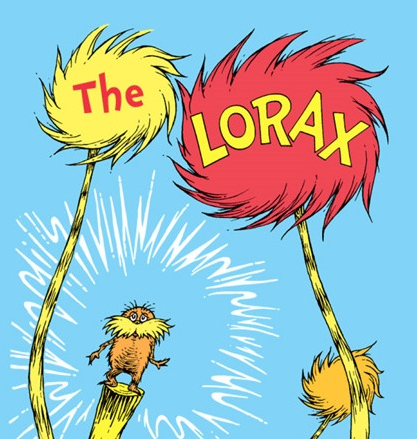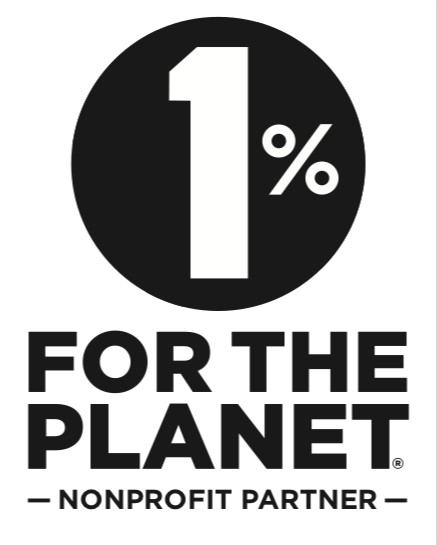
Remember Dr. Seuss’ The Lorax? We’re There.
By, Vanessa Cole
Published December 20, 2017, edited April 9, 2018
The Lorax spoke for the trees, and they need speaking for, as do the glaciers, the ocean and the air we breathe. The impact we are having as human beings IS CHANGING the chemical make up of our planet and all that sustains us. This is no longer being debated by scientists. Instead they are frantically trying to get us all to hear that we have a pinnacle window of time to fix what we have broken, and that time is NOW.
Last night I cried while watching Netflix's Original Chasing Coral. Our oceans are very sick and need us all to take an environmentalist point of view because, honestly, if we don't ALL jump on this ship, there may not be a sea to sail on.... and that ISN'T AN EXTREMIST VIEW. Netflix's original series, Chasing Coral, gave us the needed perspective on the magnitude of how our oceans, specifically, the ocean's forests--- our coral reefs--- are being affected by global warming. We also suggest Chasing Ice, which gives a real time visual understanding of the RIGHT NOW we are in.
Coral requires a specific water temperature range to survive and our oceans are warming past their threshold... I know, big deal, we'll lose a couple corals, right? Wrong. We're losing massive quantities of coral reefs at astronomical rates. This is what creates the enormity of the situation. What does it look like when a coral dies? You know those beautiful white corals you see on someone's pretty living room shelf? Those are actually the skeleton of a fallen creature of the planet. This is what happens to a coral, a living organism, when it dies--- it turns white, exposing it's skeleton. I'm not saying we shouldn't have them on our shelves, gracing our homes. I'm saying they shouldn't be that color in THEIR ECOSYSTEM. And that's what's happening to them. They are dying in their own world because of what we are doing in ours.
Our un-mindful choices are affecting our planet's ecosystems--- an imbalance that impacts our human sustainability.
At what rate? In the late 90's the first catastrophic mass coral bleaching (when the water temp raises past the coral's threshold and the coral dies, turning white) event took place. 15 years later, in 2010, the second mass coral bleaching took place. Only 5 years later the third. At this rate, in 30 years, scientists predict that the bleaching trend will kill most of the world's coral reefs. The current bleaching event is the longest, deadliest, and most widespread in history. Global Warming is not something that will happen tomorrow or 10 years from now, it is happening right now. In the words of one of the scientists featured in Chasing Coral, "these events are taking place in our lifetime, on our watch"... if we don't enact change NOW, we will be at fault for wiping out an entire ecosystem, and then another and another, until all that's left is the dust we created. I can't live with that.
As a mom, for my children and yours, who will inherit the detrimental environmental consequences of the decisions we are making and have made, I MUST ASK that we hold hands and actively make a difference.
There are BIG issues our kids will have to face, we must GIVE them the tools they will require to find solutions for the problems they have inherited and do all that we can RIGHT NOW to fix what we have broken. There is still precious, little time.
Statistics from the film, Chasing Coral:
- The NOAA reports that oceans ARE warming. This warming trend had it's first catastrophic event in the 90's, when we saw the first mass bleaching of corals (when they die and turn white, revealing their skeleton)
- Coral bleaching is a stress response in living coral, sort of like a fever in humans.
- Global warming is caused by CO2 emissions, and 93% of the heat produced by these trapped emissions on Earth has been transferred to our oceans as the planet tries to cool it's atmosphere.
- If the oceans didn't absorb this heat, our surface temperature would be 122 degrees fahrenheit!
- In 1999 the marine biologist who predicted that global warming was the cause for mass coral bleaching & that it would continue, was ridiculed.
- A healthy coral will grow about 1 cm and a half every year.
- It takes an increase of just 2 degrees centigrade to cause coral bleaching (death of coral)
- 80-90% of Florida's coral reefs are already gone.
- Australia's Great Barrier Reef, a reef as large as the whole east coast of the United States, is currently bleaching at an astronomical rate.
- To most people the ocean is out of sight, out of mind--- so it is easier for human's to ignore the magnitude of how it's health will impact them.
- The ocean controls the weather, the climate and the oxygen we breathe.
- The loss of the Great Barrier Reef would directly impact a half billion-1 billion people who rely on it for food.
- As a solution, we need to repopulate the most resilient coral strains, and protect reefs from activities that threaten them, like dredging,
over-fishing and the activities causing global warming.
The Solutions We Can Do Now, TOGETHER:
Every problem has a solution. This is something we teach at home to our kids, and promote through education programs we build and advocate for. How can we, right now, start solving the problem of global warming? As with every community issue, it must be done in unity. We have gathered some solutions from the sources offered on ChasingCoral.com and the Union of Concerned Scientists. We offer them in a list:
As Families, we can:
- TALK TO OUR CHILDREN about how beautiful our planet it is, how fragile it is and that we must care for and nurture it like we would a loved one. It is our home.
- Work toward lowering our personal carbon emissions, becoming less dependent on coal and fossil fuels. This requires voicing our opinions with the leadership who represent us.
- Switch to a car with better fuel economy.
- Make your home more air tight.
- Buy and USE a programmable thermostat (set to 78 degrees while at home and 85 degrees while away)
- Eat less meat, especially beef
- Upgrade to a more efficient air conditioner and refrigerator
- Get an electricity monitor. You can buy these at a local hardware store, or even borrow one from your local library to see where the energy hogs are in your home.
- Change to LED light bulbs
- TURN OFF THE LIGHTS you aren't using
- Wash clothes in cold water
- BUY LESS STUFF. Reduce, reuse, recycle and even REFUSE to buy from companies who do not share your values. B Corporations are built specifically to have compassionate practices for the planet and people--- these values help reduce pollution & waste and lowers your emissions to help combat global warming.
- LEARN MORE ABOUT REGENERATIVE ORGANIC AGRICULTURE and feeding your family in more sustainable ways. This organic process to farming not only produces healthier food for people, it does a whole lot more for our planet-potentially sequestering 100% of CO2 emissions!
PATAGONIA'S What If Series on Regenerative Organic Agriculture
As Educators, we can:
- Focus on preparing students to be able to cope with problem solving through mind based strategies.
- Prepare students with the tools they will require to solve real world problems through mind, project and service based learning programs.
- Engage students to have leadership as advocates for preservation, sustainability, kindness and environmental health
- Support & utilize programs that engage these progressive learning strategies, better preparing children for the world they are inheriting. Programs such as the AddyPres Solver6 SEL Enrichment Series, the Hawn Foundation's MindUp program, and other SEL based CASEL recommended evidence based frameworks that grow good people who do good things.
As Communities, we can:
- Utilize 100% clean energy. To limit the warming that threatens our ecosystems, we must reduce our carbon emissions by implementing the known climate solutions that benefit us all.
- As commerce and community partners, scale clean energy like solar, wind and electric in our business practices as well as make them more accessible and widely available to consumers.
- Go digital, use less paper & don't send junk mail
- Recycle electronics and other waste
- Use green building materials
- Educate your company employees on environmental concerns and engage them to take part in the imprint the company makes with it's practices.
All of the world and it's living beings must co-exist in balance. When that harmony is interrupted, ecosystems can't thrive. Right now, as high intelligent beings with the solutions to fix what has been broken, we must take responsibility for the contribution we are making, and what those contributions are teaching our children.
“It’s not too late for coral reefs... indeed, for many other ecosystems that are facing challenges from climate change. It’s still possible to reduce the rate at which the climate is changing, and that’s within our power today.” - Dr. Ove Hoegh-Guldberg


